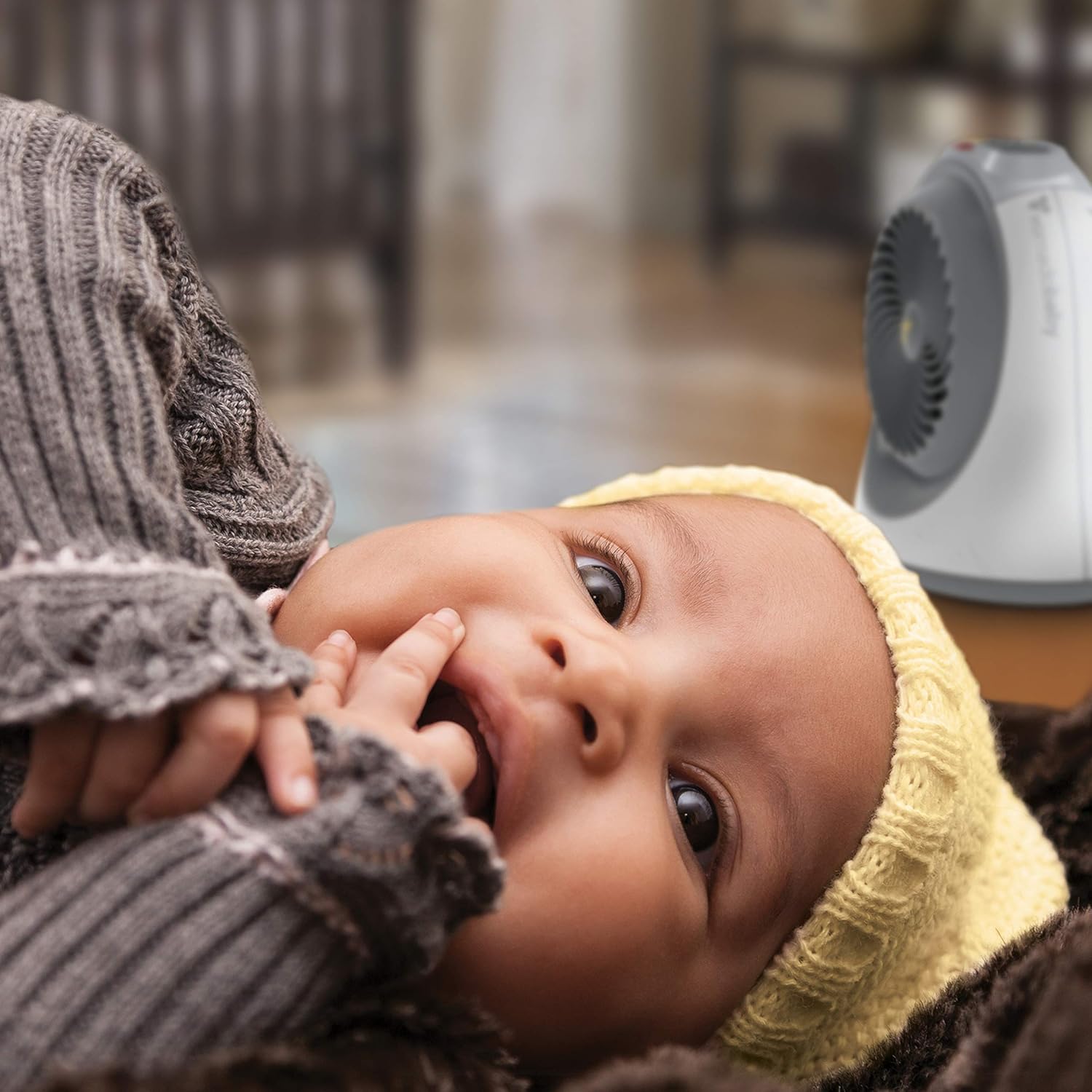
Introduction
Skin-to-skin contact, also known as kangaroo care, involves placing a newborn baby on the parent’s bare chest, providing direct physical contact. This simple, instinctive act has far-reaching benefits for both the baby and the parent, contributing to a deeper bond, improved health outcomes, and a sense of calm for both parties.
In this comprehensive guide, we’ll explore the role of skin-to-skin contact in baby bonding, from the immediate benefits in the delivery room to long-term effects on emotional well-being and development. We’ll also offer practical tips on incorporating this practice into your routine and answer common questions new parents often have.
The Science Behind Skin-to-Skin Contact
Physiological Benefits
Heart Rate and Breathing Regulation
When a newborn is placed against a parent’s bare chest, their heart rate and breathing become more regulated. Research shows that newborns who experience skin-to-skin contact often have a more stable heart rate and respiratory pattern than those who are placed in cribs immediately after birth. This stabilization can help reduce the likelihood of respiratory distress, particularly in preterm infants. The physical warmth and rhythmic rise and fall of the parent’s chest provide the newborn with the kind of sensory environment they’re familiar with from the womb, creating a seamless transition into the world.
Temperature Regulation
One of the critical roles skin-to-skin contact plays is in helping newborns regulate their body temperature. Babies, especially preterm infants, often struggle to maintain their own body heat. When placed directly on the parent’s chest, the warmth from the parent’s body acts as a natural incubator, maintaining the infant’s optimal temperature. Studies show that the parent’s body can even respond to the baby’s needs, adjusting its temperature up or down by as much as 2 degrees Celsius to ensure the baby remains comfortable.
This concept of “thermal synchrony” is especially fascinating because it shows the biological link between parent and child. For instance, if twins are being cared for skin-to-skin, a parent’s body can regulate the temperature for each baby independently based on their unique needs.
Pain Reduction
Skin-to-skin contact has been linked to a significant reduction in pain perception for newborns. Babies who are held in this position during medical procedures, such as heel pricks or vaccinations, tend to cry less and display fewer signs of distress. This natural pain-relieving effect is attributed to the calming influence of close physical contact and the release of oxytocin in both the baby and the parent. The soothing hormones also aid in quicker recovery from any discomfort the baby experiences during routine checkups or medical interventions.
Improved Immunity
When a baby is in direct contact with the parent’s skin, they are exposed to the parent’s microbiome—good bacteria that live on the skin. This exposure helps to strengthen the baby’s immune system, fostering an early line of defense against harmful pathogens. Studies have shown that babies who experience regular skin-to-skin contact have a lower risk of infections in the first few weeks of life compared to those who are primarily kept in cribs.
This early exchange of microbiota plays a critical role in the baby’s developing immune system, acting almost like a natural vaccination by exposing the baby to the parent’s healthy bacteria. This exchange, combined with the immune-boosting benefits of breastfeeding, creates a powerful line of defense for newborns in their early months of life.
Psychological and Emotional Benefits
Stress Reduction for Both Baby and Parent
Skin-to-skin contact induces feelings of safety and comfort in the newborn, which can significantly reduce stress levels. For the parent, holding their baby close releases oxytocin, often called the “love hormone,” which encourages bonding and creates a calming effect. The process is mutually beneficial: parents experience lower levels of postpartum anxiety and depression, and babies show fewer signs of irritability and colic.
This reduction in stress is essential for establishing emotional equilibrium in the first few weeks after birth. Parents, particularly those who may feel overwhelmed by the challenges of caring for a newborn, find solace in the calming effect that skin-to-skin contact has not only on their child but also on themselves.
Enhanced Bonding and Attachment
A newborn’s first hours are crucial for establishing a secure attachment with their parent. Skin-to-skin contact fosters this early bonding by promoting the exchange of visual, olfactory, and tactile cues between parent and child. This physical closeness helps build trust, which forms the foundation for a healthy emotional relationship as the child grows.
The psychological impact of early bonding extends into the baby’s social development. Studies show that babies who experience skin-to-skin contact are more likely to develop secure attachment styles, which influences their ability to form healthy relationships later in life. By fostering trust and emotional security, parents lay the groundwork for future emotional resilience in their children.
Support for Breastfeeding
Skin-to-skin contact facilitates breastfeeding by stimulating the baby’s natural feeding reflexes. The close proximity to the mother’s breast encourages the baby to latch on more easily, and the release of oxytocin helps the mother’s milk flow. Research shows that mothers who engage in regular skin-to-skin contact with their newborns are more likely to successfully initiate and continue breastfeeding for longer periods, resulting in better nutritional outcomes for the baby.
Sleep Quality and Comfort
Many parents notice that babies tend to sleep more soundly when engaged in skin-to-skin contact. This is because the baby’s proximity to the parent’s body creates a sense of safety, and the shared body warmth and rhythmic breathing help to soothe the baby into a deeper state of sleep. Babies in skin-to-skin contact also tend to experience fewer episodes of waking up abruptly or showing signs of distress during sleep.
Better sleep for the baby often translates to better rest for the parent, creating a positive cycle of improved sleep quality for both. This deeper level of rest is critical in the early weeks when babies typically have erratic sleep patterns and parents experience sleep deprivation.
Practical Tips for Skin-to-Skin Contact
When to Start
Ideally, skin-to-skin contact should begin immediately after birth, but it can be introduced at any point during the newborn phase. The sooner parents start, the more they and their baby will benefit from this practice. Hospitals worldwide now encourage this practice immediately after delivery, even in cesarean births when possible.
How Long Should Skin-to-Skin Contact Last?
Newborns can benefit from skin-to-skin contact for extended periods, especially in the first few weeks. Many healthcare providers recommend at least one hour per session to ensure the baby gets the full benefits. However, shorter sessions can also be valuable if an hour isn’t feasible.
As the baby grows, continuing skin-to-skin contact regularly can be reassuring, particularly during times of illness or stress. Even older babies and toddlers enjoy the closeness, which helps maintain that sense of connection and security.
Creating the Ideal Environment
A peaceful, low-stress environment enhances the experience of skin-to-skin contact. Dimming the lights, lowering noise levels, and ensuring the room temperature is comfortable can all contribute to a positive bonding session. Many parents find that incorporating skin-to-skin time into a regular routine, such as after feeding or before bedtime, helps create a soothing environment for both the parent and the baby.
Some parents like to play soft music or nature sounds in the background to add to the calming atmosphere. The key is ensuring that the experience is as relaxed and nurturing as possible.
Positioning Tips
For skin-to-skin contact to be effective, it’s essential to remove any barriers, such as clothing. Both the parent and the baby should be unclothed from the waist up, with the baby placed directly against the parent’s chest. A blanket can be used to cover the baby, maintaining warmth without interrupting the contact. Parents can sit upright in a chair or recline in bed, whichever position feels most comfortable and safe.
For parents of twins or multiples, alternating skin-to-skin time between babies or holding them together if space allows can provide the same benefits for each child.
Cultural Perspectives on Skin-to-Skin Contact
While the practice of skin-to-skin contact has gained recognition in Western medical practices over the past few decades, it is rooted in many indigenous and traditional cultures. In African countries, for example, kangaroo care has been a widely accepted practice for generations, particularly in rural areas where medical incubators are less accessible. Mothers and fathers alike are encouraged to carry their babies close to their bodies, often using wraps or slings, which naturally fosters skin-to-skin bonding and keeps the baby warm.
Similarly, in some Asian cultures, babies are frequently carried on the parent’s chest throughout the day, allowing for continuous skin-to-skin contact. This contrasts with Western practices, where babies are often placed in cribs or strollers shortly after birth. By studying these traditional approaches, healthcare providers in modern settings have begun to emphasize the importance of early and frequent skin-to-skin contact.
In some Native American and Aboriginal cultures, babies are closely kept in pouches or wraps, enabling constant contact with the parent. These cultural practices reflect a deep understanding of the baby’s need for warmth, comfort, and closeness.


Long-Term Benefits of Skin-to-Skin Contact
Cognitive Development
Early physical closeness between a parent and child can have long-lasting effects on cognitive development. Studies have found that babies who receive regular skin-to-skin contact are more likely to show advanced motor skills, problem-solving abilities, and language acquisition by their first birthday. These developmental milestones are linked
to the increased levels of interaction and sensory stimulation that skin-to-skin contact provides. When a baby is nestled against a parent’s chest, they are not only soothed by the warmth and rhythm of the parent’s heartbeat but are also exposed to vocal tones, body movements, and smells that contribute to sensory development.
This early exposure helps babies develop their ability to recognize familiar voices, distinguish their parent’s unique scent, and respond to facial cues. These subtle but powerful forms of interaction lay the groundwork for essential cognitive functions, including memory, recognition, and social awareness.
Emotional and Social Development
Babies who experience frequent skin-to-skin contact tend to grow up with a stronger sense of emotional security and resilience. This early bonding experience creates a foundation of trust, which is crucial for healthy emotional development. As these babies grow into toddlers and young children, they are more likely to demonstrate empathy, self-confidence, and emotional regulation.
In terms of social development, the physical closeness of skin-to-skin contact also fosters a baby’s ability to build strong relationships later in life. Secure attachment to a parent in the early months leads to better peer relationships in childhood and beyond. These babies are often more comfortable in social settings, demonstrating trust in others and a healthy ability to form connections with peers.
Impact on Parental Confidence
For parents, particularly first-time parents, skin-to-skin contact provides reassurance and boosts confidence. Many new parents experience moments of doubt, feeling overwhelmed by the responsibility of caring for a newborn. Skin-to-skin contact offers a simple yet powerful way to connect with their baby and feel capable in their parenting role. The calming effect it has on the baby often helps parents feel more in control and less anxious about their ability to soothe their child.
In particular, fathers who engage in regular skin-to-skin contact with their newborns often report feeling a deeper bond and more involved in their baby’s care. This is especially significant as it helps fathers navigate their role in early parenting, creating an emotional connection that lasts throughout the child’s life.
Reduction in Postpartum Depression
Postpartum depression (PPD) affects many new parents, but skin-to-skin contact has been shown to reduce its severity. The oxytocin released during skin-to-skin contact helps mitigate the emotional challenges that come with the postpartum period. Parents who regularly practice skin-to-skin bonding report feeling more emotionally balanced, and in many cases, the practice helps alleviate feelings of isolation or overwhelm.
This is particularly beneficial for mothers, but fathers and other caregivers also experience mental health benefits. The act of holding a baby skin-to-skin creates a positive feedback loop: the baby’s contentment leads to the parent feeling more competent and connected, reducing the risk of depressive symptoms.
Support for Preterm and Low-Birth-Weight Babies
For babies born prematurely or with low birth weight, skin-to-skin contact is not just beneficial—it’s essential. In neonatal intensive care units (NICUs) around the world, kangaroo care is used as a critical intervention for stabilizing preterm infants. Research shows that skin-to-skin contact helps these vulnerable babies regulate their heart rate, maintain body temperature, and even improve weight gain.
The benefits of skin-to-skin contact for preemies extend beyond the immediate postpartum period. Babies who receive kangaroo care in the NICU tend to have shorter hospital stays, lower rates of complications, and improved long-term health outcomes. Parents of preterm babies often feel helpless in the face of their baby’s medical needs, but being able to provide skin-to-skin contact gives them an active role in their child’s care, which can alleviate feelings of stress and uncertainty.

Common Concerns About Skin-to-Skin Contact
Is It Safe for Everyone?
In most cases, skin-to-skin contact is perfectly safe for both parents and babies. However, certain medical conditions may require modifications. For example, if a mother has had a complicated cesarean birth or is recovering from significant blood loss, she may need assistance holding her baby. Fathers or other caregivers can also provide skin-to-skin contact, ensuring the baby still receives the benefits while the mother recovers.
In the rare case of babies born with medical conditions that require immediate intervention, such as respiratory issues or congenital heart defects, the timing of skin-to-skin contact may be delayed until the baby is stable. That said, healthcare providers often make every effort to introduce skin-to-skin contact as soon as medically possible, as it can aid in the baby’s recovery.
What If I Can’t Do Skin-to-Skin Right Away?
While immediate skin-to-skin contact is ideal, it’s never too late to start. If circumstances at birth prevent you from engaging in skin-to-skin right away, you can begin as soon as you and your baby are ready. Whether your baby is a few days, weeks, or even months old, the benefits of skin-to-skin contact remain significant. Incorporating it into your daily routine, even in small doses, can still promote bonding, reduce stress, and support your baby’s development.
Can I Overdo Skin-to-Skin Contact?
There’s no such thing as too much skin-to-skin contact. Babies thrive on closeness and physical connection, and skin-to-skin contact helps meet their need for security, warmth, and comfort. As long as both the baby and the parent are comfortable, skin-to-skin sessions can be as frequent as desired. However, parents should always practice safe sleeping habits, ensuring the baby is placed on their back to sleep in a safe environment after skin-to-skin contact.
Skin-to-Skin Contact and Parenting Styles
Incorporating skin-to-skin contact into your parenting approach can complement various parenting styles, from attachment parenting to more structured routines. For parents who prioritize attachment-based practices, skin-to-skin contact provides an early opportunity to foster closeness and responsiveness to the baby’s needs. For parents who prefer a more scheduled approach, skin-to-skin time can still be incorporated into feeding, nap, or bedtime routines.
Regardless of parenting style, the benefits of skin-to-skin contact are universal. Whether used to calm a fussy baby, support breastfeeding, or simply bond during quiet moments, skin-to-skin contact fits into a wide range of parenting philosophies and can be adjusted based on individual family needs.
Recommended Products
Here’s a list of products we recommend to for for you based on the article “The Role of Skin-to-Skin Contact in Baby Bonding: A Comprehensive Guide”:
1. Boba Wrap Baby Carrier – A soft, breathable baby wrap perfect for kangaroo care, allowing skin-to-skin contact while keeping the baby snug and secure.
2. Baby K’tan Baby Wrap Carrier – Offers easy-to-use design for skin-to-skin contact, especially for parents of preterm or low-birth-weight babies.
3. Ergobaby Embrace Newborn Carrier – Designed to mimic skin-to-skin closeness while being ergonomic and comfortable for both parent and baby.
4. Halo Sleepsack Swaddle – Helps newborns feel secure while promoting the benefits of skin-to-skin contact before swaddling them for sleep.
5. Aden + Anais Swaddle Blanket – These muslin blankets are soft and breathable, great for wrapping up babies after skin-to-skin time.
6. Owlet Smart Sock Baby Monitor – Tracks baby’s heart rate and oxygen levels, giving parents peace of mind during skin-to-skin sessions and beyond.
7. Frida Mom Adjustable Postpartum Recovery Garment – For mothers recovering from childbirth, this garment offers comfort and support while facilitating skin-to-skin bonding.
8. DockATot Deluxe+ Dock – Creates a comfortable, safe space for newborns during breaks from skin-to-skin time, allowing parents to keep them close.
9. Medela Skin-to-Skin Contact Shirt – A specially designed shirt that enables hands-free kangaroo care for parents to bond with their newborn comfortably.
These products are aligned with promoting the benefits of skin-to-skin contact, ensuring both parent and baby have the necessary tools for bonding and development.
Conclusion
Skin-to-skin contact is a powerful and natural way for parents to bond with their newborns, offering immediate physiological benefits, emotional support, and long-term developmental advantages. From regulating a newborn’s heart rate and temperature to fostering emotional security and cognitive growth, this simple practice has profound effects on both the baby and the parent.
Whether you’re a new mom, a first-time dad, or a seasoned parent of multiple children, incorporating skin-to-skin contact into your daily routine can strengthen your bond with your baby and support their health and well-being. As we’ve explored throughout this guide, the benefits extend far beyond the early months of infancy, shaping your child’s emotional and social development for years to come.
By embracing the practice of skin-to-skin contact, you’re not only nurturing your baby but also creating memories and a connection that will last a lifetime.






